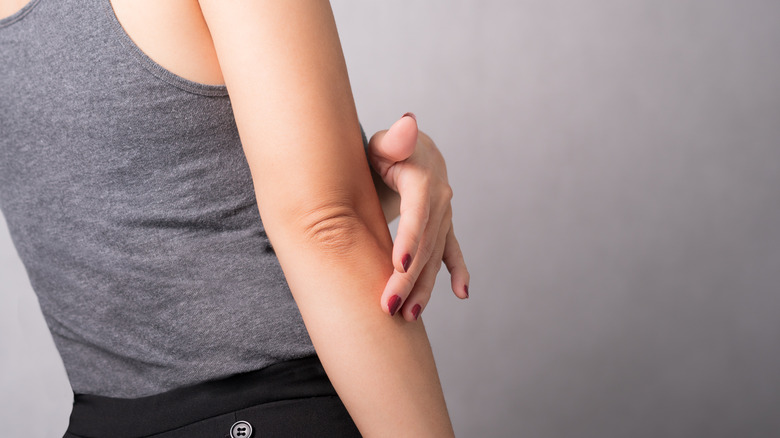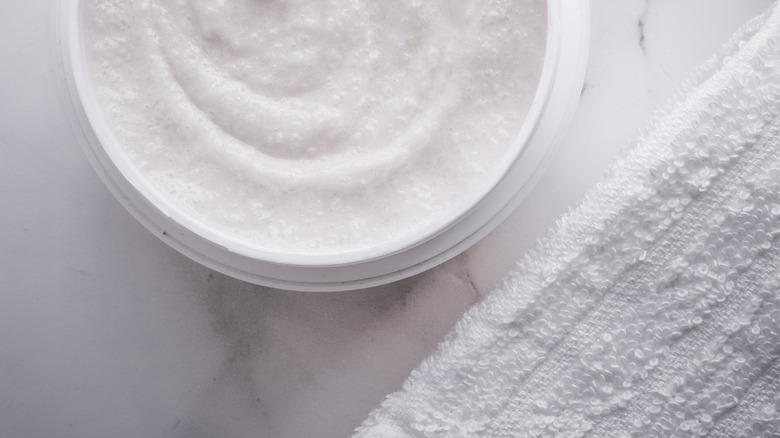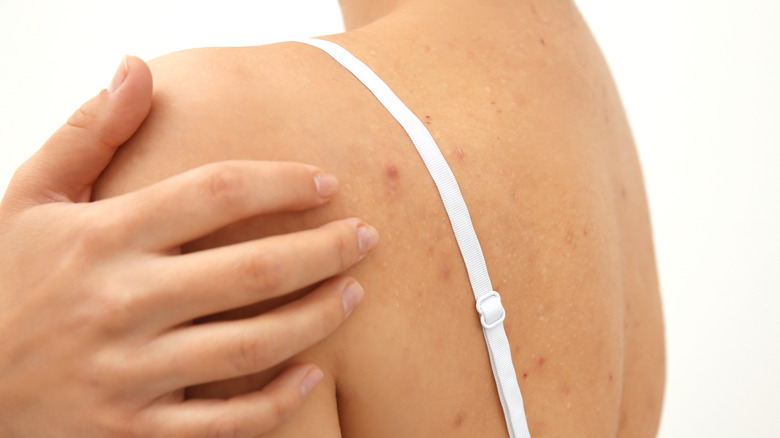Signs That Your Skin Needs To Be Exfoliated
Fun fact: Humans are covered by 25 to 30 layers of dead cells that sit on top of our epidermis, otherwise known as the topmost layer of our skin. Also, we shed around half a billion of these cells each day. While that may sound like plenty, Medical News Today says we also produce new cells underneath the dead ones, and the young cells make their way to the surface of our skin to repeat the shedding process at a rate of every four weeks.
If these dead cells come off when they are meant to, we wouldn't have problems. But as GQ points out, the dead cells don't always shed on their own, and when they stick around, they can lead to problems like hair loss, clogged pores (which can lead to breakouts), and encourage the creation of callouses. The trick is being able to tell when our skin needs help clearing up the backlog — and thankfully, more often than not, our skin lets us know if we can read the signs.
When do we know it's time to exfoliate?
ViaBuff says there are a few easy ways you can tell if your skin is asking for help with exfoliation. One important clue is when your go-to cream, moisturizer, or skin treatment stops working, and your skin feels no different, no matter how or when you've applied it.
You might want to examine your skin to see if it looks dull, or rub your skin gently to see if it feels dry. Another method is to take a piece of clear tape measuring about 3 to 4 inches long, and then applying that piece to a section of your forearm (preferably a section with little to no hair). Rub on the tape gently for a few seconds before peeling the strip away. If the tape shows flecks of dried skin, it may be time to give your body a good dry brush (which is an excellent way to exfoliate), or a gentle scrub.
Over-exfoliation is a thing too
But even if exfoliation worked magic the first time, think twice before you starting a regular exfoliation schedule — because over-exfoliating is a thing too. It's a good idea to examine your skin closely each time you want to attack your dead skin cells with a scrub or peel.
If your skin looks red or irritated, it could be time to lay the exfoliant aside. Dry, combination, and normal skin types have been known to react to over-exfoliation by leaving skin dryer, and with a tendency to peel. Other skin types may experience even oilier skin. After all, the epidermis is still meant to act as a protective layer, and getting rid of that protection could well end up being counterproductive.


